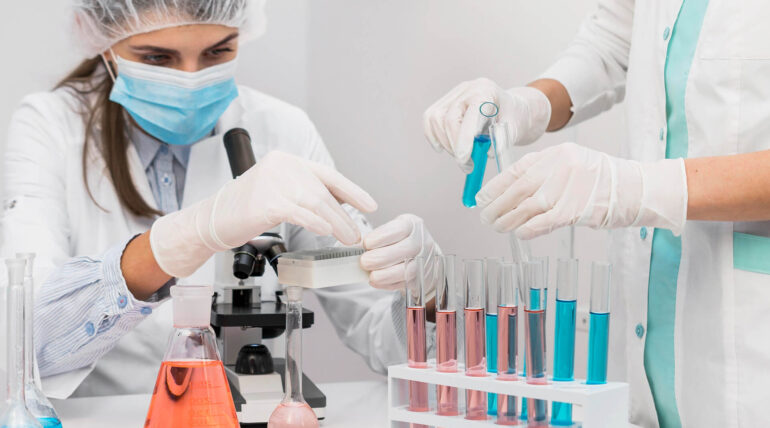
In an era of rapid technological advancement and ever-changing market dynamics, the pharmaceutical manufacturing industry faces the challenge of meeting increasing global demand while maintaining the highest standards of quality and safety. As the world’s population grows and healthcare needs become more complex, manufacturers must innovate and adapt to provide accessible, effective, and safe medications. Here are some of the key trends shaping the future of pharmaceutical manufacturing and why quality remains a fundamental focus.
1. Automation and Digitalization: A Shift Towards Efficiency
One of the most significant trends in pharmaceutical manufacturing is the integration of automation and digital technologies. Advanced manufacturing technologies, such as robotics, artificial intelligence (AI), and machine learning, are transforming traditional production processes, enabling manufacturers to achieve higher precision and efficiency.
Automated systems allow for real-time monitoring and control of production processes, reducing human error and increasing consistency in product quality. For instance, automated quality control systems can quickly detect deviations from standard parameters, ensuring that only products meeting the highest standards make it to market. This not only improves efficiency but also significantly reduces production costs, making essential medications more affordable for consumers.
2. Continuous Manufacturing: The Path to Rapid Production
Traditional batch manufacturing has been the standard in the pharmaceutical industry for decades. However, continuous manufacturing is emerging as a more flexible and cost-effective alternative. Unlike batch processes, continuous manufacturing involves producing pharmaceuticals in a streamlined, non-stop process, reducing production time and minimizing the risk of contamination between batches.
The benefits of continuous manufacturing are particularly evident during times of crisis, such as the COVID-19 pandemic, where rapid production and scalability are crucial for delivering life-saving medications. With continuous manufacturing, companies can respond more quickly to market demand, ensuring that patients receive the medicines they need without delays.
3. Quality by Design (QbD): A Proactive Approach to Quality Assurance
Quality by Design (QbD) is a systematic approach to pharmaceutical development that focuses on designing quality into the product from the very beginning. Rather than relying solely on testing at the end of the production process, QbD emphasizes understanding how formulation, manufacturing processes, and variability impact product quality. This proactive approach ensures that manufacturers can identify and control potential issues early in the production cycle, resulting in safer and more reliable products.
QbD has become a preferred method for regulatory bodies like the FDA and WHO, as it aligns with their emphasis on continuous improvement and risk management in pharmaceutical manufacturing. By adopting QbD principles, manufacturers can reduce product recalls and compliance issues, ultimately building trust with consumers and healthcare providers.
4. Sustainability and Green Manufacturing
Sustainability is no longer optional in the pharmaceutical industry. Increasing awareness of environmental issues has led to greater pressure on pharmaceutical companies to adopt greener manufacturing practices. This includes reducing waste, minimizing energy consumption, and implementing eco-friendly processes such as water recycling and efficient effluent treatment.
Green manufacturing not only benefits the environment but also enhances a company’s reputation among consumers and stakeholders. Pharmaceutical companies that invest in sustainable practices demonstrate their commitment to corporate social responsibility (CSR), which can lead to stronger brand loyalty and a positive impact on their bottom line.
5. Advanced Therapeutics: The Role of Biologics and Personalized Medicine
The rise of biologics and personalized medicine is reshaping the pharmaceutical landscape. Biologics—complex drugs derived from living organisms—are increasingly used to treat conditions like cancer, autoimmune disorders, and chronic diseases. The production of biologics requires specialized manufacturing facilities that can handle the complexities of working with living cells.
Personalized medicine, which tailors treatments to individual patients based on their genetic makeup, is also driving changes in pharmaceutical manufacturing. This shift requires more flexibility in production processes, as manufacturers must adapt to smaller batch sizes and customized formulations. However, the potential for targeted therapies that offer better patient outcomes makes personalized medicine an exciting and valuable area of growth for the industry.
6. Regulatory Compliance: Meeting Global Standards
With global supply chains and a diverse array of markets, regulatory compliance remains a cornerstone of pharmaceutical manufacturing. Manufacturers must navigate a complex web of regulations to ensure that their products meet the safety and quality standards of each country in which they operate.
Compliance with Good Manufacturing Practices (GMP) is essential to ensure product quality and safety. Staying up-to-date with changing regulations, understanding regional differences, and investing in robust compliance systems are critical for manufacturers looking to expand their global footprint. Companies that can maintain compliance while delivering high-quality products will have a competitive edge in the global market.
Why Quality Matters More Than Ever
In the world of pharmaceuticals, quality is not just a goal—it’s a necessity. High-quality manufacturing processes ensure that patients receive safe and effective medications, preventing adverse effects and ensuring positive health outcomes. A focus on quality builds trust between manufacturers, regulators, healthcare providers, and patients, fostering a reputation for reliability that is essential for long-term success.
Moreover, in an industry where a single defect can have serious consequences, the emphasis on quality helps to mitigate risks and maintain compliance with stringent regulatory standards. For pharmaceutical companies, investing in advanced quality control technologies and adopting best practices in quality assurance is not just about meeting regulatory requirements—it’s about upholding a commitment to the well-being of patients worldwide.
Conclusion: Preparing for the Future of Pharma Manufacturing
The future of pharmaceutical manufacturing is defined by technological advancements, a commitment to quality, and a focus on sustainability. As the industry evolves, manufacturers must adapt to new trends and challenges while maintaining the highest standards of safety and efficacy. By embracing continuous improvement and innovation, pharmaceutical companies can not only meet the demands of today’s market but also pave the way for a healthier future.

Nam vel lacus eu nisl bibendum accumsan vitae vitae nibh. Nam nec eros id magna hendrerit sagittis. Nullam sed mi non odio feugiat volutpat sit amet nec elit.
Tam vel lacus eu nisl bibendum accumsan vitae vitae nibh. Nam nec eros id magna hendrerit sagittis. Nullam sed mi non odio feugiat volutpat sit amet nec elit.